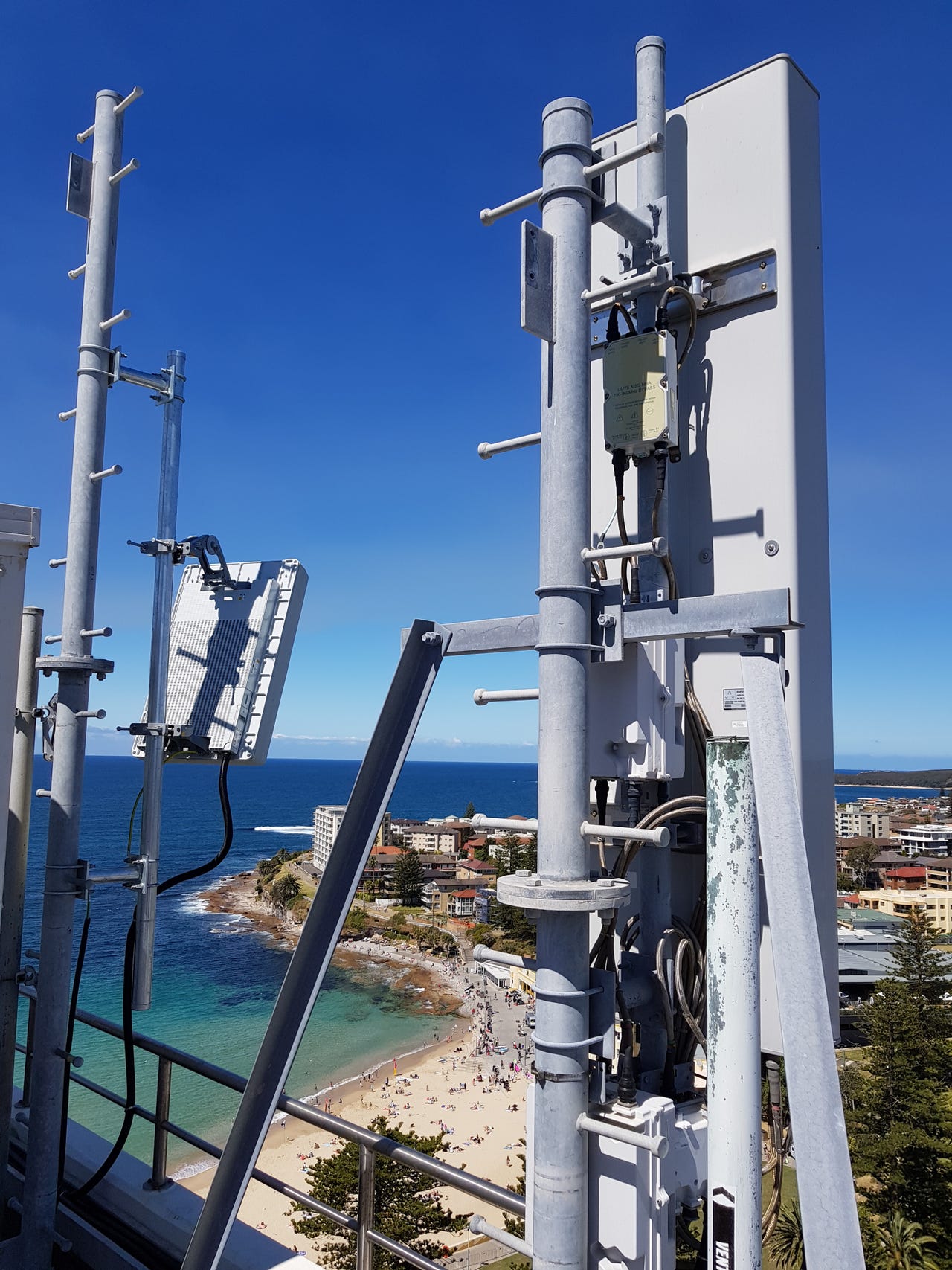Vodafone to deploy 4G Massive MIMO in 2018


Vodafone Australia has announced that it will be adding capacity to its metro 4G networks with the addition of Massive Multiple-Input Multiple-Output (MIMO) technology in partnership with Chinese networking giant Huawei.
Using what Vodafone's GM of Technology Strategy Easwaren Siva called "LTE Advanced Pro" technology, Vodafone attained speeds of up to 717Mbps using frequency-division duplex (FDD) spectrum during field trials this week across its live 4G network in Cronulla, Sydney.
Siva told ZDNet that Vodafone used 20MHz of its 1800MHz spectrum band using Huawei's 32T32R Active Antenna Unit (AAU) which allows for 3D beam forming, shaping beams both horizontally and vertically, and increases the network's capacity fourfold.
"Huawei is a key supplier and vendor to Vodafone; they currently supply our radio access network, so they were a natural partner for us on this trial," Siva told ZDNet.
"Importantly, basically it's a new generation of antenna systems and that's the key behind this. When we say Massive MIMO, we actually refer to there being multiple transmit and receive radio units in the antenna system. The antenna system is ... a 32-transmit 32-receive system, and hence forming basically multiple beams using the same frequency from one antenna system, and that's where the improvement in capacity comes from.
"In this demonstration, we had basically eight devices being served by eight different beams."
Massive MIMO is targeted at the higher spectrum bands, he said, with Vodafone looking to use it across 2100MHz "in the near future" as well.
With data usage increasing by more than 60 percent each year, Siva said, it's important to utilise the spectrum Vodafone already has to improve the capacity of its spectral assets, rather than simply touting higher theoretical speeds.
"What individual consumers will actually experience will be a consistent data experience whilst they are consuming effectively 50 to 70 percent more data year on year -- that's the key part," Siva explained.
"This is not about an individual device speed shout; this is about a network capacity expansion showcasing Vodafone's technology leadership and its continued network investment we're directing, ensuring our customers receive a consistent experience."
Siva told ZDNet that Vodafone will have beta products for Massive MIMO 4G coming out next year, and will look to deploy the solution in Q4 2018.
It will be deployed in "the areas requiring that capacity", concentrating on CBDs and inner suburbs of highly populated areas, with Siva saying Vodafone already has a shortlist of around 100 potential areas being considered. Predominantly, it will be rolled out across Sydney and Melbourne, with sites planned for five other cities including Canberra.
Vodafone is "absolutely" also looking at using quadrature amplitude moderation (QAM) technology to increase network capacity and speeds, Siva added.
"It is very much part and parcel of the technology moving forward, and to be honest there are actually a higher level of QAM orders that are being forecasted, but it does have a reliance on device support," he told ZDNet.
"We are certainly looking at what a device capability will be in time, and then preparing the network accordingly."
According to Siva, the technology is a "significant building block for 5G", with Vodafone seeing it as a bridge to the next generation of networks.
"The stepping stone is in fact technology such as massive MIMO," Siva said.
Huawei, which had undertaken some lab testing prior to the live trials with Vodafone, said Massive MIMO is predominantly a 5G precursor.
"Massive MIMO is a technology that can be used in 4G and evolved to support 5G by 3GPP standardisation. It can bring three to five times both cell capacity and spectrum efficiency to support long-term traffic increase demand in operator's mobile network, which is part of Vodafone Group's technology evolution strategy," president of its Huawei's Vodafone Account Department Eric Yang said.
"Huawei Massive MIMO AAU can also evolve to 5G, further protecting operator's investments."
Vodafone, which attained throughput speeds of up to 5Gbps in a 5G lab trial with Nokia in October last year, is additionally hoping to introduce the 700MHz spectrum it purchased for AU$285.9 million earlier this year into its network within the next 12 months, Siva said.
Vodafone's announcement came just hours after Optus revealed to ZDNet that its own Massive MIMO trials had attained throughput speeds of 818Mbps when combined with three-cell carrier (3CC) aggregation.
Kent Wu, director of Mobile Networks Planning at Optus, told ZDNet on Thursday that the trials were conducted across its live network in Macquarie Park, Sydney, increasing the capacity of the network fourfold.
"We have combined three-cell carrier aggregation together with the Massive MIMO, so now it's live in the network," Wu said.
"We have taken this technology one step ahead, and by using the two technologies combined together, we are the world's first to enable this three-cell carrier aggregation and Massive MIMO in the live network."
Optus used a 64T64R antenna system for the trials -- which commenced in June, and were likewise conducted alongside Huawei -- across its time-division duplex (TDD) 2300MHz spectrum band.
The 2300MHz band will also allow it to extend carrier aggregation to 4CC in future, with Wu saying that Optus is additionally considering trialling Massive MIMO on FDD spectrum on the 1800MHz band in future.
Optus and Huawei also made use of beam-forming technology during the trial, and will begin deploying the 4.5G technology across capital cities from the end of 2017, as well as using it for special events such as New Year's Eve and the Australian Open.